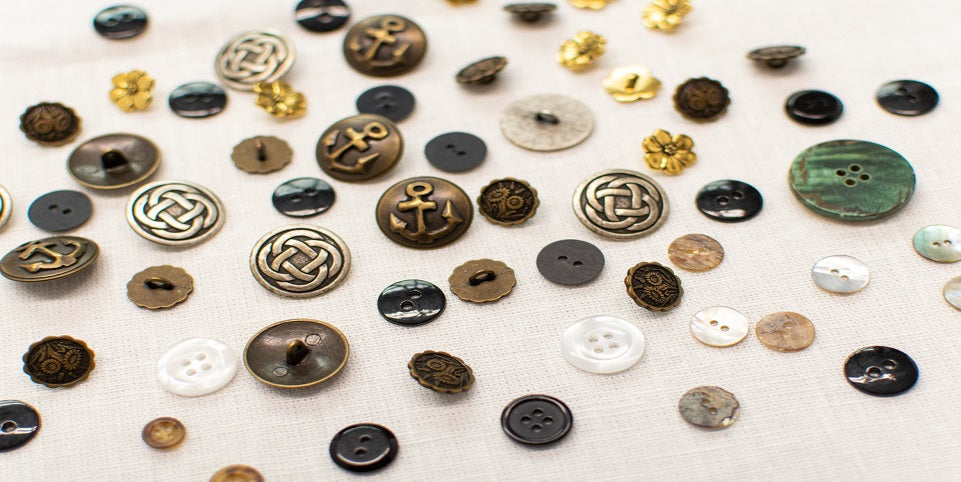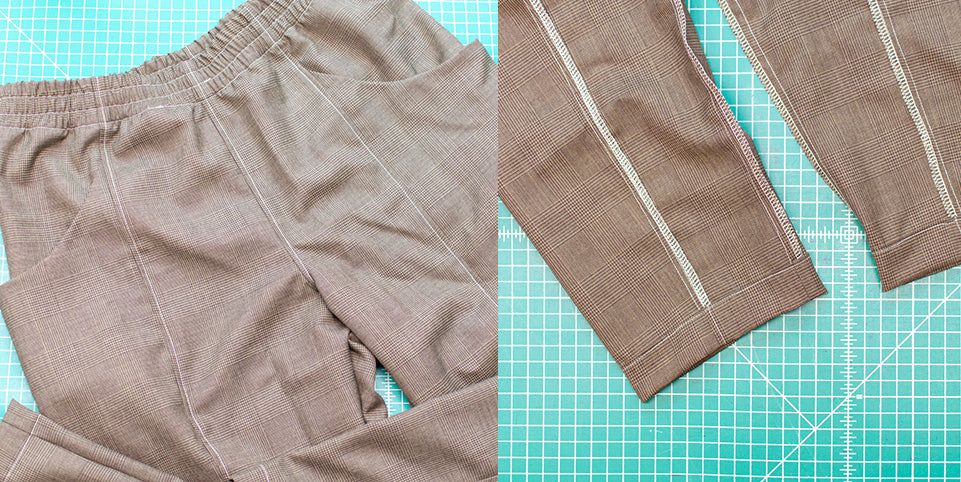Introduction
From shimmering dresses, to flowy, see-through curtains, chiffon fabric is a staple in the textile industry. Chiffon is a luxurious and sheer fabric, that has a lustrous sheen and a gorgeous drape. Chiffon fabric has a slightly textured surface due to how the yarns are twisted prior to weaving. While it used to be a silk fabric that was only affordable to upper class society, today it has become more and more accessible over the years. Chiffon fabric is commonly used in eveningwear and home décor items. This article will take you through everything you need to know about chiffon, from what it is, to how it’s made, to sewing tips and more.
What Is Chiffon Fabric?
The name chiffon comes from the French word, “chiffe,” which translates to “cloth” or “rag.” It is believed that chiffon originated in 18th century Ethiopia and was woven by indigenous groups in the area. Through trade and exploration, the weaving process for chiffon fabric soon made its’ way to France. Since the 1700’s, France has been a lead producer of chiffon, even being known as the official birthplace of the fabric.
While silk chiffon had been popular among European royalty for years, its’ popularity expanded worldwide during the Industrial Revolution. With the invention of synthetic fibers in the early 20th century, chiffon fabric started to be produced on a large scale in the United States and beyond, where it was seen as a fashionable textile.
What Does Chiffon Fabric Look Like?
Chiffon is known for it’s sheer, shimmery finish, which gives the fabric an elegant appearance. The sheen across the surface of this fabric is created by using fibers with some shine as well as twisting the fibers tightly to make very thin yarns. Chiffon often reflects light, attracting attention from those around. In addition, the sheerness of this fabric makes it perfect for romantic, layered garments. It’s often used as an overlayer on top of a lining or stacked in multiple layers to make the finished garment opaque enough to wear.
Chiffon fabric is also a very lightweight, floaty fabric. It is loosely woven with very fine, twisted yarns, giving it a gauze, or net-like appearance. This fabric has an exceptionally flowy drape, making it a popular choice for loose-fitting garments such as gowns, skirts, and blouses.
What Is Chiffon Fabric Made Of?
Historically, chiffon fabric was made from silk. At the time, only the fine and soft fibers of silk, could give chiffon fabric the luxurious and elegant characteristics that we know today. However, when nylon was invented in 1938, some affordable and more durable nylon chiffons became available on the market. The invention of polyester in 1958 spurred the development of polyester chiffon, which proved to be an even more affordable alternative to silk than nylon. Today chiffon is made from a variety of different fibers, including silk, cotton, rayon, polyester, and nylon.
Two of the most popular types of fibers used to make chiffon are:
- Silk: Silk chiffon is more lustrous and smoother than other types of chiffons. Silk chiffon looks and feels more high-end and has a slightly more fluid drape. Chiffons made from silk will also hold their color better over time, and can last for many years, if cared for properly.
- Polyester: Polyester chiffon is more affordable and durable than chiffons made from other fibers. However, polyester chiffons are not as shiny as silk, and can be rougher to the touch. Polyester chiffon also doesn’t drape as well as silk chiffon.
How Is Chiffon Fabric Made?
To make chiffon, it all starts with preparing the yarns for weaving. The yarns used to make chiffon are tightly twisted either clockwise (z-twist) or counter-clockwise (s-twist) so that half of the yarns are twisted in each direction. These coiled yarns are called crepe yarns. The twists used to create crepe yarns are much tighter than the typical twists in a standard yarn. The point of twisted crepe yarn is to create a subtle texture on the surface of a finished chiffon fabric.
Once the crepe yarns are twisted, they are woven together loosely in a standard plain weave style. This means that the yarns are alternated in a basic 1-by-1 weave pattern where the weft yarns are passed over, then under, then over each warp yarn in a crisscross pattern. The z-twist yarns are selected for either the warp or weft direction, then the s-twist yarns are assigned to the opposite direction. This weave creates a checkerboard pattern. The twisted yarns create a subtly textured look and feel on the surface of the chiffon fabric.
What Does Chiffon Feel Like??
Chiffon is a soft and light to medium weight fabric; however, it can feel slightly coarse due to being thin and net-like. Since chiffon is sheer and net-like, the fabric is also breathable. Silk chiffons are known for being softer than chiffons made from other fibers like nylon and polyester. Additionally, chiffon is a flowy fabric. When chiffon is hung, the fabric has a loose, fluid drape.
What Is Chiffon Fabric Used For?
Chiffon is a universal fabric that can be used for almost any kind of apparel and decor. Formally, chiffon fabric can be used to craft gowns, dresses, sarees and more. Chiffon fabric can be used for great formal wear because it is shiny, flowy and can hold bright colors well. Additionally, chiffon can be layered on top of skirts or dresses, to create a voluminous look without being sheer. Additionally, chiffon fabric can be used to craft more casual apparel like blouses and skirts.
Chiffon fabric is also used for stylish decors. One popular type of decor chiffon fabric is used for are curtains. The level of sheerness may vary, but chiffon curtains allow light to pass through while still allowing some privacy. Additionally, draped chiffon fabric is used for luxurious draperies, chair covers, and table runners, at weddings, parties, or other, similar events.
Tips For Sewing With Chiffon Fabric
Sewing with chiffon may appear to be tricky because it is slippery, however with a few helpful tips anyone can easily sew this fabric. Check out these chiffon sewing tips:
- Preventing Slippage: Due to how the fabric is woven, chiffon tends to slip when layered. It is important to stabilize chiffon when sewing or cutting the fabric, so that it doesn’t move around. One way to prevent slippage is to use tissue paper. Place a layer of tissue paper both underneath, and on top of the fabric before cutting and sewing. Once the seams have been sewn, the tissue paper can be torn away from the stitching. Another great option for preventing slippage when working with chiffon fabric is to spray starch. Try applying a spray starch after cutting the fabric, but before sewing chiffon, to give the fabric some stiffness and body. The spray starch will come out during a quick wash, so it is a great temporary stabilizer.
- Using The Correct Supplies: When sewing with chiffon fabric, make sure to use a fine needle and thread. Since chiffon is lightweight and sheer, standard thread and needles are too large, and may cause damage to the fabric. Instead, try using a fine, silk thread because it is unlikely to catch on the fabric or cause puckering. In addition, a narrow microtex needle is a better choice than a standard needle for sewing chiffon fabric because it glides through the fabric easily without causing any snagging.
What Fabric Is Similar To Chiffon?
Did you know there are other fabrics similar to chiffon? Here are a few examples:
- Tulle: Tulle is a lightweight and sheer fabric that is made with an extremely loose weave and has a net-like appearance. It is like chiffon fabric in that it is sheer, lightweight, and loosely woven. However, tulle fabric it is slightly stiffer and more net-like than chiffon.
- Organza: Organza is a sheer, loosely-woven fabric that is made in a plain weave style. This fabric is very similar to chiffon in that it is traditionally made from silk, is sheer, and has a beautiful sheen. Organza fabric is smoother than chiffon. Organza, like chiffon is also made from tightly twisted yarns, however the yarns of organza are not twisted in opposite directions. This results in organza fabric being stiffer than chiffon.
- Georgette: Georgette is a lightweight, plain woven fabric that has a soft drape. Like chiffon, georgette is also made with z-twist and s-twist yarns, however instead of a plain weave, georgette fabric is woven in a satin style weave. This results in georgette having a similar weight and drape to chiffon, but having a coarser texture, and opaque appearance.
Where To Buy Chiffon Fabric?
Since the creation of synthetic chiffons, the fabric has increased in popularity. Chiffon fabric can be purchased at any fabric store; however, the quality and contents may vary. Some stores may carry high-end silk chiffons, while others may have a large selection of inexpensive synthetic chiffons. Either option can be great, it just depends on what you’re looking for.
Conclusion
Elegant, lightweight, and sheer, chiffon fabric is perfect for formal attire, stylish garments, and décor items. Made in a standard, plain weave style, chiffon fabric is woven with tightly twisted yarns that creates a subtle texture and puckered appearance. While this fabric was traditionally made from silk, it is now available in many different fibers, such as cotton, polyester, nylon, and rayon. While you may have heard otherwise, chiffon fabric isn’t as difficult to sew as it may seem. Be sure to check out our collection of chiffon fabrics, which are sold by the yard at wholesale prices. Whether it’s for the first time, or hundredth time, use chiffon fabric for your next fabric project!
 Transparent
Transparent
 White
White
 Pink
Pink
 Red
Red
 Orange
Orange
 Ivory
Ivory
 Yellow
Yellow
 Gold
Gold
 Brown
Brown
 Green
Green
 Blue
Blue
 Purple
Purple
 Grey
Grey
 Black
Black
 Multi
Multi
 Abstract
Abstract
 African Print
African Print
 Animal Print
Animal Print
 Baby & Nursery
Baby & Nursery
 Buffalo Check
Buffalo Check
 Camo Print
Camo Print
 Celestial
Celestial
 Chevron
Chevron
 Church
Church
 Damask
Damask
 Embroidered
Embroidered
 Floral
Floral
 Geometric
Geometric
 Gingham Check
Gingham Check
 Houndstooth
Houndstooth
 Licensed
Licensed
 Paisley
Paisley
 Plaid
Plaid
 Polka Dot
Polka Dot
 Sports
Sports
 Stripe
Stripe
 Tie Dye
Tie Dye













1 comment
Gail
Thank you for the invite
Thank you for the invite